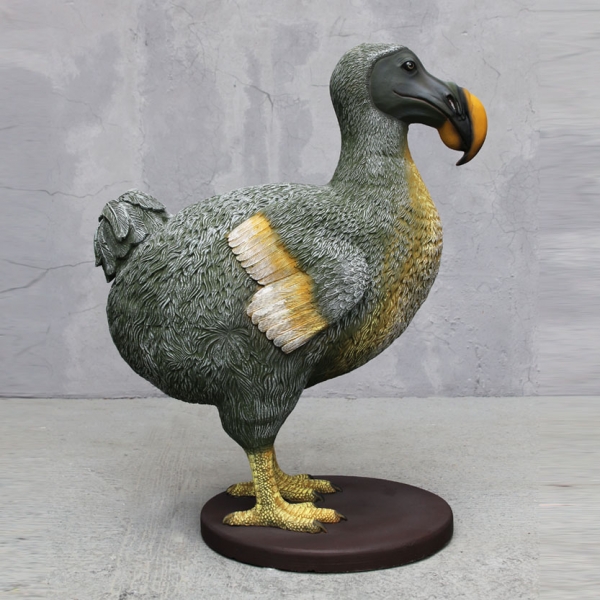

The Museum also holds two of the most famous paintings of dodos: a copy of George Edwards' colourful 1758 depiction and Jan Savery's 1651 image of a plumper dodo. Today, what remains of the original specimen is the skull with left side of skin, the sclerotic ring from the eye, the skeleton of the foot, the sectioned femur, a feather (removed from the head in 1986) and various tissue samples taken over the years. It is currently not known how the Tradecants acquired their dodo specimen or the extent of the original specimen. This specimen is first listed in 1656 in a catalogue of the Tradescant collection as 'Dodar, from the Island Mauritius it is not able to flie, being so big'. One of the three, the so-called ‘Oxford Dodo’, is a specimen that was part of the Tradescant collection, one of the founding collections of the Ashmolean Museum at the University of Oxford. Only three dodo specimens from this period exist, despite records of living dodos being brought from Mauritius.

These sailors, and others to come, quickly decimated the dodo population as an easy source of fresh meat for their voyages. The birds had no natural predators, so they were unafraid of humans. The birds were discovered by Portuguese sailors around 1507. Vector hand drawn dodo bird silhouette isolated on white. A couple of dodo birds, one brown, the other white drink on the shores of a river running through the tropical jungles of the island of Mauritia. Chromolithograph after a drawing by Francis John, published in 1900. Stuffed dodo bird, an extinct flightless bird from Mauritius, east of Madagascar in the Indian Ocean. 1690 extinct, about one meter (3 ft) tall, flightless bird that lived exclusively on the island of Mauritius in the Indian Ocean. The last confirmed sighting of a dodo was in 1662 by the 1700s, it was considered extinct. Unfortunately, the species was wiped out less than 200 years after its discovery. Dodo (Raphus cucullatus, or Didus ineptus) - ca. These animals spread across the island, destroying dodo habitats and eating their eggs. The tale of the dodo’s decline begins in 1598, when Dutch sailors first encountered them. From early accounts, many of the Mauritian birds were tame and easily approached, and so easily caught by humans. But the species’ rapid decline was probably caused by the dogs, cats, rats and pigs that the sailors had brought with them. They lived on fruit and nested on the ground. These birds were about a metre tall and weighed about 20kg. To add insult to injury, our depiction of dodos as strange, awkwardly-shaped birds may not even. The dodo was a flightless bird, first encountered by Europeans in the late 16th century on the island of Mauritius in the Indian Ocean. The last dodo sighting was reported in 1662, and in 1680, the bird was declared officially extinct.


 0 kommentar(er)
0 kommentar(er)
